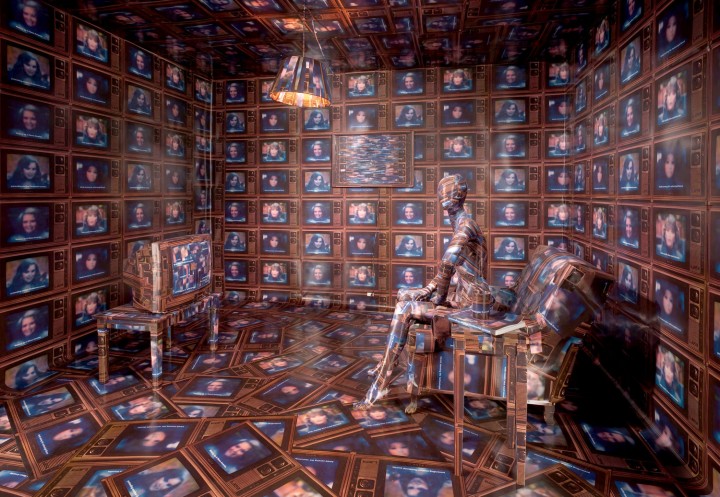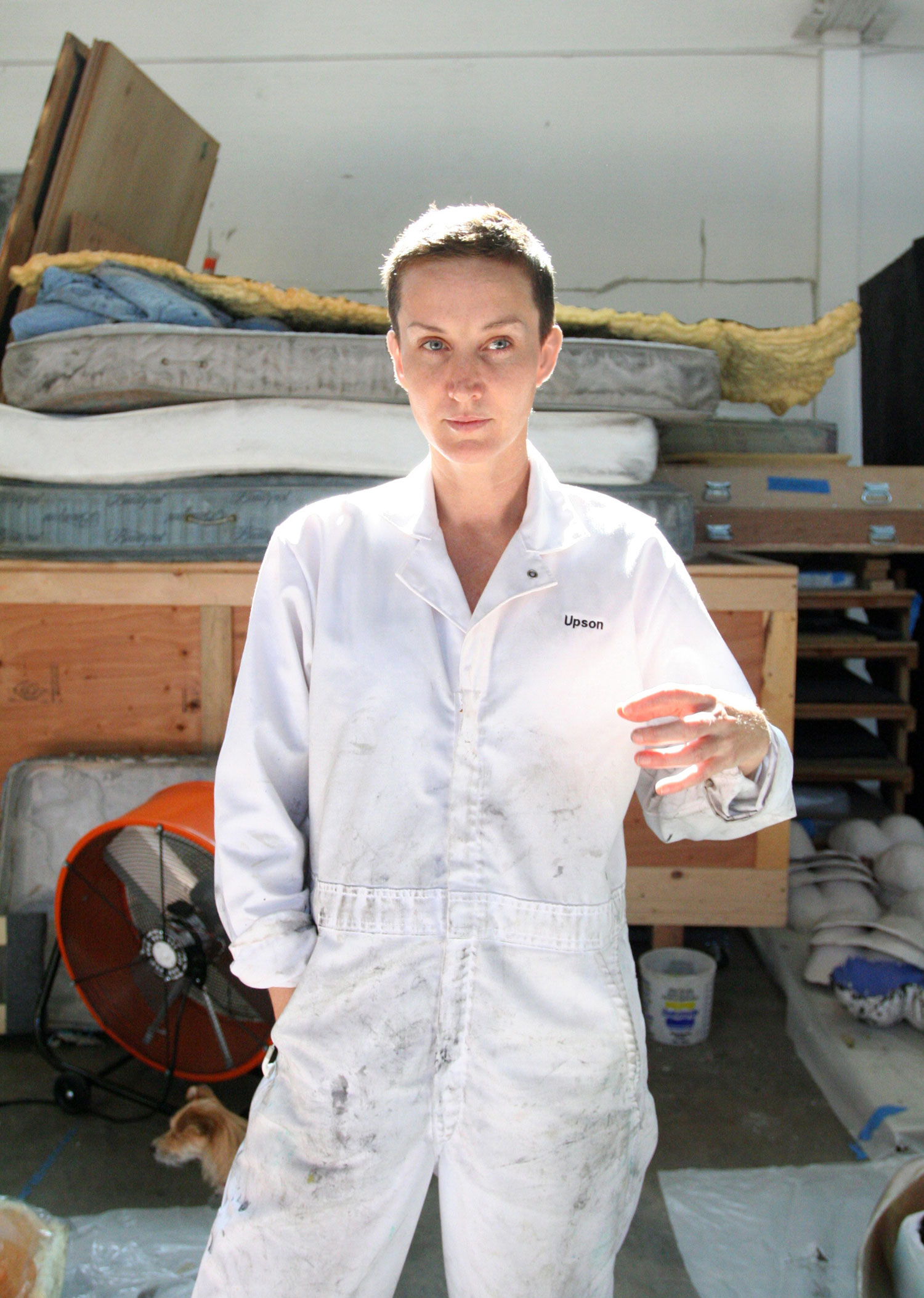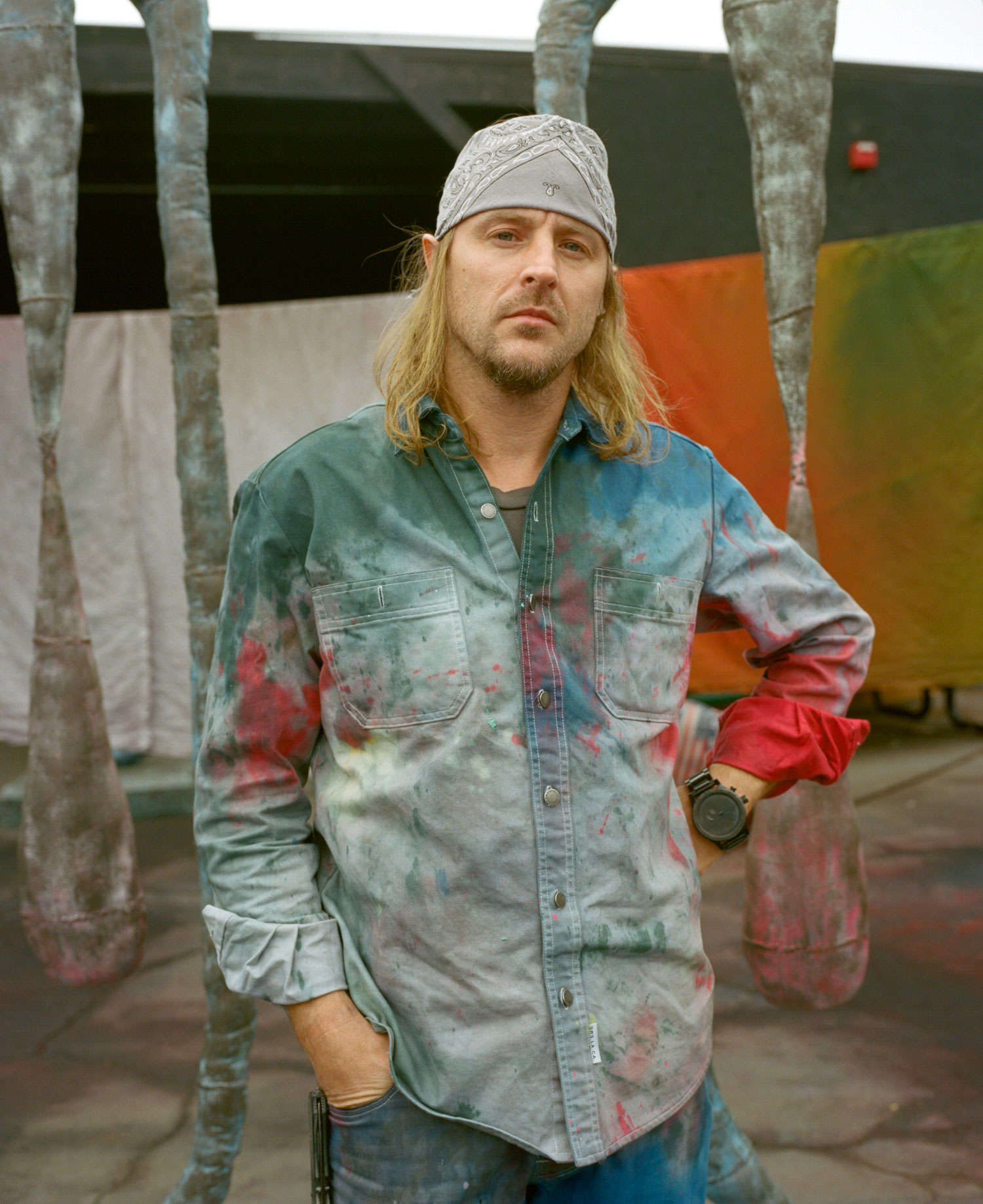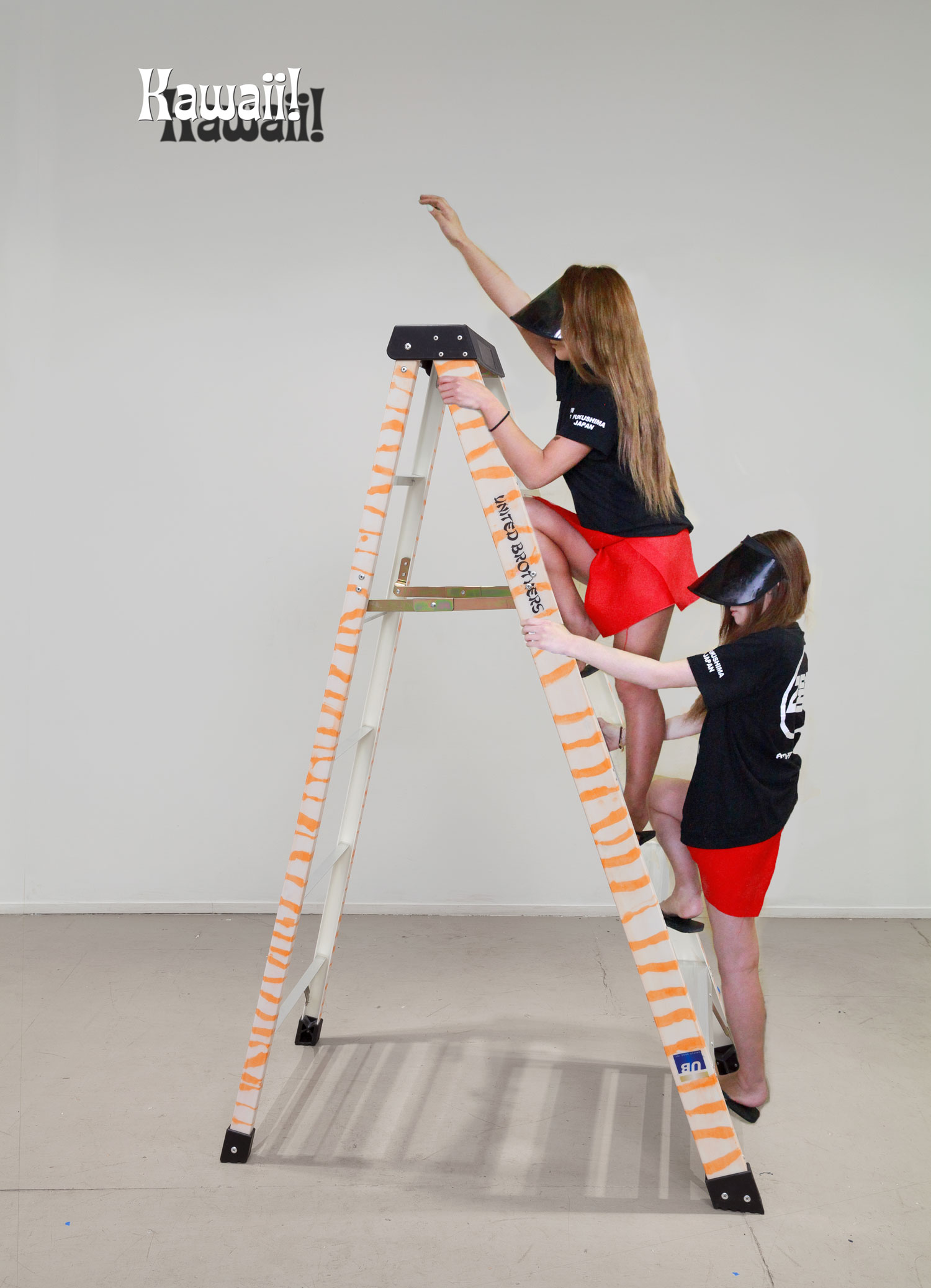
Robert Heinecken liked to describe himself not as an artist or a photographer but as a “paraphotographer.” He explained that he used the term like “paralegal” or “paramedic”: knowing only enough about his field “to keep someone out of trouble until the real guys show up.”
What Heinecken did know about photography was that the medium — especially in its analogue, alchemical form — has a magical capacity for perceiving what the human eye cannot. Heinecken’s greatest technical contributions both relied on this idea: photograms of two-sided printed pages; and “videograms,” which are auratic imprints taken directly from a television. Examples of each are included in Cherry and Martin’s exhibition of the Los Angeles artist’s work, “Sensing the Technologic Banzai,” and they are highlights of the show.
The exhibition focuses on mid-career work by Heinecken, who died in 2006. Absent, therefore, is his early breakthrough series of photograms titled “Are You Rea” (1964–68), made by projecting light through magazine pages placed on black-and-white photo paper. Those iconic works — initially produced as silver gelatin prints and then later as lithographs — combine ghostly figures and objects, thrown into negative by the printing process, with snatches of only occasionally legible text. Poignant and often nightmarish coincidences arise, much of it sexual in nature: a beautiful woman’s face is covered in thick fur due to the coat pictured on the reverse page; another woman stares from a third eye in the middle of her forehead. A still more unsettling observation is that these juxtapositions existed, unseen, even before Heinecken’s intervention. His role was to reveal, through cameraless photography, something that was already latent in the media.
“Are You Rea,” which takes its title from a truncated headline and was meant by the artist to be pronounced “Are You Ray,” in tribute to Man Ray, is dense with Dada and Surrealist influences, as filtered through the imagery of ’60s Madison Avenue. When Heinecken returned to this photogram technique in the late ’80s, the effects and associations were quite different. In the “P.P.” series (1989–91), examples of which are included in Cherry and Martin’s exhibition, he used color Cibachrome instead of black-and-white negative paper. The prints are less dark and airless, less crazed and more open to the naturalistic effects of light that infused the original photographs. PP/Whiskey-Figures/E (1991), for instance, melds the recto of an ad for tooth whitener with the verso of an ad for gin. “The Killer Smile” reads a caption, while a hand pours Bombay Sapphire over a man’s white teeth.
Heinecken’s videograms — a term he coined himself — are drained of all but the barest essential information, and in the process filled up with supernatural portent. By holding a sheet of photographic paper up against a television and turning the set on and off, Heinecken discovered that he could expose images directly from the screen. He first used the technique in the series “Inaugural Excerpt Videograms” (1981), in order to bear indexical witness to the televised swearing in of president Ronald Reagan. These works offer a clarifying lens through which to read the later series “Misc Newswoman” (1984), which depicts female talking heads; rather than objectifications of desire (as much of Heinecken’s work with appropriated pornography and female glamour shots suggests), the videograms may simply be about bearing witness.
More Heinecken newswomen — and men — appear in a simultaneous exhibition at Marc Selwyn Fine Art, Los Angeles. Titled “Newswomen Corresponding,” the show centers on the artist’s text and image project A Case Study in Finding an Appropriate TV Newswoman (A CBS Docudrama in Words and Pictures) (1984), in which he performs a faux-strategic analysis of the facial characteristics favored by men, eating their breakfast cereal, of the women delivering their morning news. While it is misogynist to group women according to their physical attributes, it may be the closest Heinecken comes to an overt critique of the raw material that he is working with, even if the absurdist text accompanying the images never risks too much sincerity.
Waking Up in News America (1986), by contrast, is a formally ambitious but conceptually unsubtle installation that dominates the show at Cherry and Martin. A generic American sitting room (does such a thing really exist?) is constructed in the gallery, complete with walls, framed paintings, a chair and coffee table and, of course, a television. Everything — including the two mannequins that inhabit the space — is covered with lithographic prints featuring videograms of four newsreaders framed by old-fashioned televisions.
We are what we watch, Heinecken seems to say. His point is belabored by the overwrought execution, and has none of the casual effectiveness of his photograms and straight videograms. The installation shares that weakness with a series of collages, “Socio Fascio Lingerie” (1981), in which Heinecken has meticulously collaged breasts and pubic hair directly over the bras and panties worn by catalogue lingerie models. The work is all the more bothersome for Heinecken’s apparent reluctance to take a moral stance on his own creepy invasiveness. A note in the margin of one collage transcribes a Hustler magazine announcement for a “blind beaver hunt … for all those amateur erotic photographers with blind girlfriends or wives.” In Heinecken’s handwriting, it seems less like ironic appropriation than a “note to self.”
This ambivalence on Heinecken’s part has certainly impeded the progress of his canonization as an artist. But it also may be his most radical quality; when, in the heyday of second-wave Feminism, most male artists wouldn’t dare to use pornographic images of women, Heinecken not only embraced such subject matter but refused to condemn it. He knew something that, for many artists today, is something of a truism: that it is impossible to critique a culture or an ideology from outside. He placed himself in the center of the net of desires and exploitations that late capitalism has woven, and which held him captive throughout his life. What is perhaps most surprising is that he didn’t appear to struggle more — or at least make it look like he was struggling.





